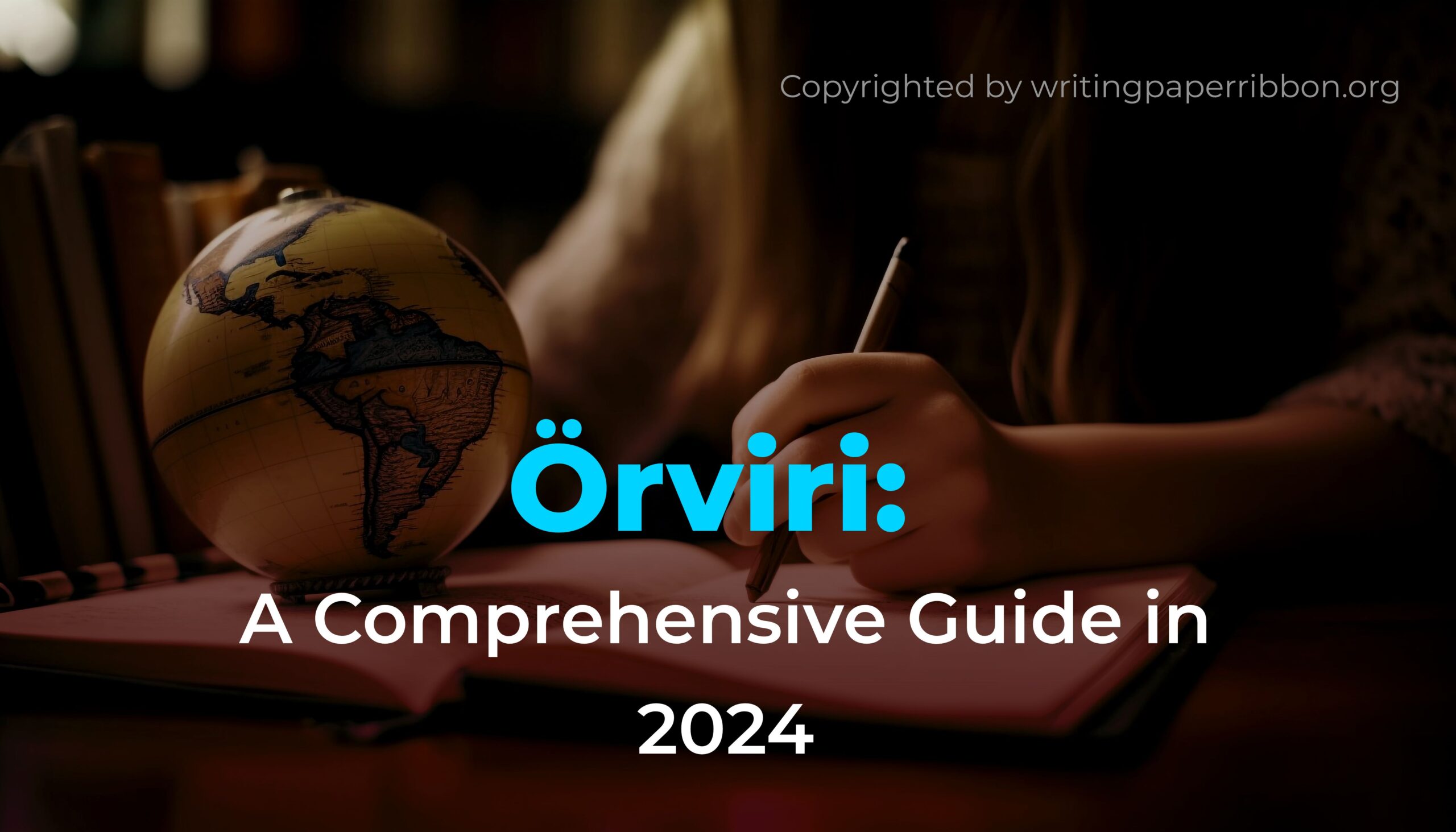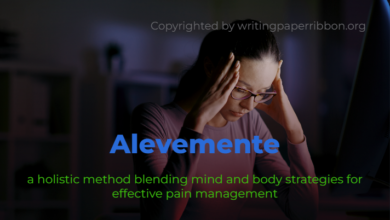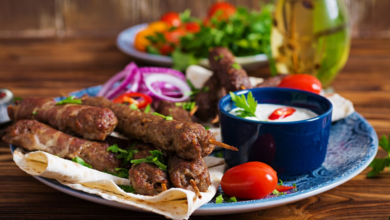Understanding Örviri: A Comprehensive Guide in 2024
What is Örviri?
Örviri is a term that might sound unfamiliar to many, yet it encapsulates a concept that resonates deeply with various fields such as linguistics, anthropology, and cultural studies. Örviri refers to the phenomena where a language or a dialect undergoes significant transformations over time, influenced by social, economic, and political changes. This concept helps us understand how languages evolve and adapt, reflecting the dynamic nature of human societies.
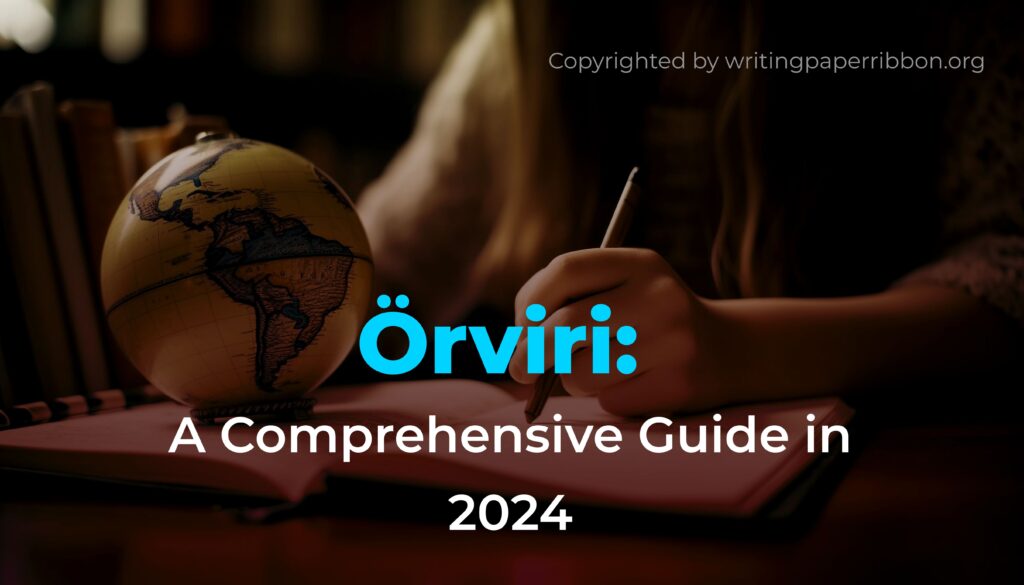
Table of Contents
Origins of the Term
The word “Örviri” has its roots in ancient linguistic studies, derived from a blend of Nordic and Germanic linguistic traditions. It symbolizes the intertwining of languages and the perpetual state of flux that characterizes them. Historically, the term was used by scholars to describe the changes in Old Norse dialects as they spread across different regions of Scandinavia.
Historical Context
The concept of Örviri is deeply embedded in the historical context of migration, conquest, and cultural exchange. As peoples moved and interacted, their languages borrowed words, phrases, and structures from each other. This led to the development of creoles, pidgins, and other mixed languages, embodying the essence of Örviri.
Linguistic Implications
From a linguistic perspective, Örviri highlights the processes of phonetic changes, semantic shifts, and syntactic evolution. Languages constantly borrow from one another, leading to changes in pronunciation, the meaning of words, and sentence structures. This is evident in the English language, which has incorporated elements from Latin, French, German, and many other languages over the centuries.
Social Dynamics
The social dynamics of Örviri are equally fascinating. Language changes often mirror shifts in social structures, power dynamics, and cultural trends. For instance, the rise of the British Empire and the global spread of English can be seen as a form of linguistic dominance that reshaped many local dialects and languages worldwide.
Cultural Significance
Culturally, Örviri underscores the richness and diversity of human expression. It celebrates the adaptability and resilience of languages as they merge and transform. This concept encourages us to appreciate the hybrid nature of our linguistic heritage and the continuous process of cultural fusion.
Technological Influence
In the modern era, technology plays a crucial role in accelerating the pace of linguistic change. The internet, social media, and digital communication platforms introduce new slang, jargon, and abbreviations that quickly become part of everyday language. This digital Örviri reflects the rapid, globalized nature of contemporary communication.
Educational Perspectives
Örviri has significant implications for education. It encourages a more flexible and inclusive approach to language teaching, recognizing the legitimacy of dialects and mixed languages. Educators are urged to embrace linguistic diversity and to see language change as a natural, positive process.
Future Directions
Looking ahead, the concept of Örviri will continue to be relevant as global migration and technological advancements further influence language evolution. Scholars predict even more rapid and diverse changes in languages, making it an exciting field of study.
Personal Impact
On a personal level, understanding Örviri can enhance our appreciation for the languages we speak and the words we use. It reminds us that our way of communication is part of a larger historical and cultural tapestry, constantly evolving and adapting.
Influence modern languages

Örviri, the phenomenon of linguistic evolution, has a profound impact on modern languages, shaping the way we communicate in today’s world. The influence of Örviri can be seen in various aspects of language, from vocabulary to grammar, and even in the ways languages interact with each other.
Vocabulary Expansion
One of the most noticeable influences of Örviri on modern languages is the expansion of vocabulary. Languages continuously borrow words from one another, leading to a rich lexicon filled with loanwords. For instance, English has incorporated words like “sushi” from Japanese, “entrepreneur” from French, and “piano” from Italian. This borrowing enriches the language and reflects cultural exchanges.
Slang and Colloquialisms
The creation and adoption of slang and colloquialisms are direct results of Örviri. These informal terms often emerge within specific communities or subcultures and can quickly spread to the broader population. Words like “selfie,” “ghosting,” and “binge-watch” are examples of modern slang that have become widely accepted, illustrating how language evolves to capture contemporary experiences.
Phonetic Changes
Phonetic changes are another significant aspect of Örviri’s influence. Over time, the pronunciation of words can shift, leading to regional accents and dialects. For example, the Great Vowel Shift, which occurred between the 15th and 18th centuries, dramatically altered the pronunciation of English vowels. Today, we see similar changes happening in real-time through phenomena like the “Californian Vowel Shift.”
Grammar and Syntax Evolution
Örviri also affects grammar and syntax, leading to changes in sentence structure and usage rules. Modern English, for instance, has seen a shift from using complex, multi-clause sentences to simpler, more direct ones. Additionally, the use of gender-neutral pronouns like “they” as a singular pronoun reflects ongoing changes in grammatical norms influenced by social movements and inclusivity.
Technological Impact
Technology accelerates the pace of linguistic change, amplifying the effects of Örviri. Texting, social media, and digital communication have introduced new linguistic forms, such as emojis and acronyms (e.g., “LOL” for “laugh out loud” and “BRB” for “be right back”). These forms of communication are reshaping language use and even influencing spoken language.
Code-Switching and Multilingualism
Örviri promotes code-switching and multilingualism, where speakers alternate between languages or dialects within a conversation. This is common in multicultural societies where individuals might switch between English, Spanish, and local dialects depending on the context. This fluid use of multiple languages enriches communication and reflects the dynamic nature of modern linguistic landscapes.
Language Death and Revival
While Örviri leads to the evolution and creation of languages, it can also contribute to language death. Dominant languages can overshadow minority languages, leading to their decline. However, there are also movements to revive endangered languages, such as the revitalization of Gaelic in Scotland or Maori in New Zealand, highlighting the dual impact of Örviri.
Influence of Media
Media plays a crucial role in disseminating linguistic changes. Television, movies, and music introduce new words and phrases to global audiences. For example, popular TV shows like “Friends” have contributed phrases like “How you doin’?” to everyday speech, demonstrating media’s power in shaping language.
Cross-Cultural Communication
Örviri enhances cross-cultural communication by facilitating the exchange of linguistic elements across different languages and cultures. This exchange fosters greater understanding and collaboration among people from diverse backgrounds. Phrases like “carpe diem” (Latin for “seize the day”) and “hakuna matata” (Swahili for “no worries”) are used internationally, bridging cultural gaps.
Educational Adaptations
Educational systems are adapting to the influences of Örviri by incorporating linguistic diversity into their curricula. Schools are increasingly offering bilingual education and language immersion programs, recognizing the benefits of multilingualism. This approach prepares students for a globalized world where linguistic flexibility is a valuable asset.
Örviri Historical Examples

The concept of Örviri, illustrating the evolution and transformation of languages, is vividly captured through various historical examples. These instances highlight how languages have changed over time due to migrations, invasions, trade, and cultural interactions.
The Norman Conquest and Middle English
One of the most significant examples of Örviri is the transformation of Old English into Middle English following the Norman Conquest of 1066. The Normans, speaking Old Norman, brought a plethora of French words into the English language. This period saw the infusion of French vocabulary, especially in areas like law, government, art, literature, and religion. Words like “court,” “judge,” “beauty,” and “literature” are just a few examples that emerged during this time.
The Influence of Arabic on Spanish
The Moorish invasion of the Iberian Peninsula in the 8th century led to a significant Arabic influence on the Spanish language. During the nearly 800 years of Moorish presence in Spain, many Arabic words were integrated into Spanish. This influence is particularly evident in vocabulary related to science, agriculture, architecture, and daily life. Words such as “acequia” (irrigation canal), “algebra,” and “azúcar” (sugar) are all derived from Arabic.
The Spread of Latin and the Romance Languages
The expansion of the Roman Empire spread Latin across Europe, leading to the development of the Romance languages: Italian, French, Spanish, Portuguese, and Romanian. As the Roman Empire fragmented, Latin evolved differently in various regions, influenced by local languages and cultures. This divergence exemplifies Örviri as Latin transformed into distinct yet related languages.
The Formation of Modern English
The development of Modern English from Early Modern English during the 15th to 17th centuries showcases another key example of Örviri. The period saw the Great Vowel Shift, a major change in English pronunciation, and the standardization of grammar and spelling due to the advent of printing. Additionally, the Renaissance brought a resurgence of interest in classical languages, leading to the incorporation of Latin and Greek words into English.
The Impact of Colonialism
Colonialism had a profound impact on language evolution, as European languages mixed with indigenous languages in colonized regions. In the Americas, Africa, and Asia, pidgins and creoles developed as simplified forms of communication between colonizers and indigenous peoples. For instance, Haitian Creole emerged from the interaction between French colonizers and African slaves, incorporating elements of both French and African languages.
The Influence of Trade
Trade routes have historically been conduits for linguistic exchange. The Silk Road, for example, facilitated the spread of words and phrases among traders from diverse linguistic backgrounds, including Chinese, Persian, Arabic, and various European languages. This exchange enriched the vocabularies of the languages involved, embodying the essence of Örviri.
The Migration Period
The Migration Period, also known as the Barbarian Invasions (circa 300-700 AD), saw significant linguistic changes in Europe. Germanic tribes, such as the Goths, Vandals, and Saxons, migrated across the continent, influencing the languages of the regions they settled in. This period led to the development of early Germanic languages and had a lasting impact on the evolution of European languages.
The Influence of the Vikings
The Viking Age (circa 800-1100 AD) provides another historical example of Örviri. The Vikings, speaking Old Norse, raided and settled in various parts of Europe, including the British Isles, Normandy, and Eastern Europe. Their language left a lasting imprint on the languages of these regions. In English, for example, words like “sky,” “window,” and “knife” have Old Norse origins.
The Role of Religion
Religious movements and texts have also played a crucial role in language evolution. The translation of the Bible into various languages, such as Latin, Greek, and later vernacular languages, introduced new vocabulary and concepts. The spread of Christianity and Islam led to the incorporation of religious terms and phrases into everyday language.
The American Influence on English
In more recent history, the global influence of American culture, particularly through media, technology, and business, has led to the widespread adoption of American English terms and phrases worldwide. This phenomenon exemplifies Örviri in the modern era, showcasing how languages continue to evolve and influence each other in an interconnected world.
Does Örviri affects language preservation

Örviri, the process of linguistic change and evolution, has significant implications for language preservation efforts. While it highlights the natural dynamism of languages, it also poses challenges to the maintenance and revitalization of endangered languages.
Threats to Minority Languages
One of the primary concerns is that dominant languages, through the process of Örviri, often overshadow minority languages. As larger languages spread and evolve, smaller languages can lose speakers and become endangered. This shift can occur due to globalization, economic factors, and social pressures to assimilate into the dominant culture.
Language Shift and Assimilation
Language shift is a phenomenon where speakers of a minority language gradually adopt a dominant language, often leading to the decline of their native tongue. This shift can be influenced by factors such as migration, intermarriage, and the desire for socioeconomic advancement. Over time, the original language may be used less frequently, especially by younger generations.
The Role of Education
Education systems play a crucial role in language preservation. The dominance of certain languages in educational curricula can marginalize minority languages, contributing to their decline. However, bilingual and immersion programs can counteract this by promoting proficiency in both the dominant and minority languages, helping to preserve linguistic diversity.
Cultural Identity and Language
Language is a key component of cultural identity. The erosion of a language can lead to the loss of cultural practices, oral traditions, and historical knowledge embedded within it. Efforts to preserve and revitalize languages often involve documenting and teaching traditional stories, songs, and customs that are integral to a community’s heritage.
Technology and Language Preservation
While technology can accelerate linguistic change, it also offers tools for preservation. Digital platforms, social media, and mobile apps can be used to teach and promote endangered languages. Online dictionaries, language courses, and virtual communities provide resources for speakers and learners, making language preservation more accessible.
Community Involvement
Successful language preservation efforts often rely on the active involvement of the community. Initiatives that engage native speakers in the documentation, teaching, and promotion of their language are more likely to succeed. Community-led programs can foster a sense of pride and ownership, encouraging the transmission of the language to future generations.
Government Policies
Government policies and support are critical for language preservation. Legislation that recognizes and protects minority languages, provides funding for educational programs, and promotes linguistic diversity can make a significant impact. Examples include the Welsh Language Act in the UK and the Maori Language Act in New Zealand, both of which have contributed to the revitalization of these languages.
Linguistic Documentation
Documenting endangered languages is a vital step in preservation. Linguists work to record the grammar, vocabulary, and phonetics of languages that are at risk of disappearing. These records serve as valuable resources for language revitalization efforts and ensure that knowledge of the language is preserved even if it falls out of everyday use.
Revitalization Programs
Language revitalization programs aim to bring endangered languages back into active use. These programs often involve creating educational materials, training teachers, and developing curricula that incorporate the language. Successful revitalization efforts, such as those for Hebrew and Hawaiian, demonstrate that it is possible to revive languages and reintegrate them into daily life.
The Future of Language Preservation
The future of language preservation in the context of Örviri depends on a balance between embracing linguistic evolution and maintaining the diversity of the world’s languages. As languages continue to change and influence each other, conscious efforts are needed to protect those at risk of disappearing. By combining modern technology, community engagement, and supportive policies, it is possible to preserve linguistic diversity for future generations.
Technology Role
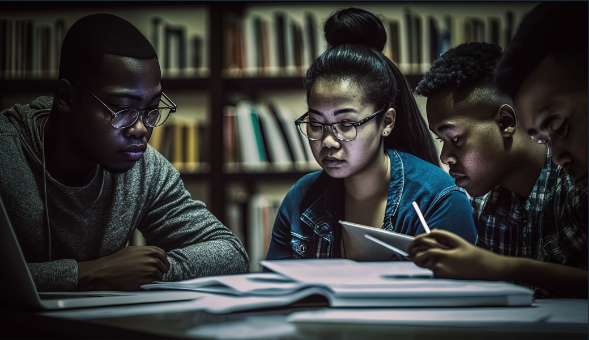
Technology plays a pivotal role in the phenomenon of Örviri, both accelerating linguistic change and offering tools for language preservation and revitalization. The interaction between technology and language is multifaceted, influencing how we communicate, learn, and document languages.
Digital Communication
The rise of digital communication platforms, such as social media, messaging apps, and online forums, has significantly influenced language evolution. These platforms introduce new forms of language, including abbreviations, slang, and emojis. Terms like “LOL” (laugh out loud), “BRB” (be right back), and emojis have become integral to digital communication, showcasing the dynamic nature of language in the digital age.
Influence of Social Media
Social media has a profound impact on linguistic trends. Platforms like Twitter, Instagram, and TikTok allow users to create and share content that can go viral, spreading new words and phrases rapidly. Hashtags, memes, and viral challenges contribute to the emergence of new linguistic phenomena, reflecting the real-time evolution of language.
Online Learning and Language Apps
Technology has revolutionized language learning through online courses, mobile apps, and virtual classrooms. Platforms like Duolingo, Rosetta Stone, and Babbel offer interactive and accessible language learning experiences. These tools help learners of all ages acquire new languages, supporting linguistic diversity and preservation.
Linguistic Documentation and Preservation
Advancements in technology have greatly enhanced the documentation and preservation of languages, especially those that are endangered. Audio and video recording devices, along with digital databases, enable linguists to capture and store detailed information about languages. Projects like the Endangered Languages Documentation Programme (ELDP) use technology to document languages and make resources available to the public.
Translation and Machine Learning
Machine learning and artificial intelligence have transformed translation services. Tools like Google Translate and DeepL use sophisticated algorithms to provide real-time translations between numerous languages. These technologies facilitate cross-linguistic communication and help bridge language barriers, although they also raise questions about accuracy and cultural nuance.
Artificial Intelligence in Linguistics
AI and natural language processing (NLP) technologies are advancing the field of linguistics. AI-driven tools can analyze large corpora of text to identify patterns and trends in language use. These insights contribute to our understanding of language evolution and the dynamics of Örviri. Additionally, AI can assist in creating language models and predictive text applications.
Virtual and Augmented Reality
Virtual and augmented reality technologies are emerging as innovative tools for language learning and cultural immersion. VR and AR applications can create immersive environments where users interact in different languages, enhancing their learning experience. For example, VR simulations can transport learners to virtual marketplaces or historical sites, providing contextual language practice.
Crowdsourcing and Community Involvement
Technology enables crowdsourcing initiatives where communities contribute to language documentation and preservation efforts. Platforms like Wikipedia and Wiktionary rely on user-generated content to build comprehensive linguistic resources. This collaborative approach leverages the knowledge and expertise of diverse communities, promoting linguistic diversity.
Digital Storytelling
Digital storytelling platforms allow communities to share their languages and cultures with a global audience. Websites, podcasts, and video channels can feature traditional stories, songs, and cultural practices, preserving them for future generations. This form of digital preservation helps keep endangered languages alive and accessible.
Future Prospects
The future of Örviri in the context of technology is both exciting and complex. As technology continues to evolve, it will undoubtedly introduce new linguistic phenomena and transform the ways we use language. At the same time, it offers powerful tools for preserving and revitalizing endangered languages. Balancing these dynamics will be crucial to maintaining linguistic diversity in an increasingly digital world.
Creation of new languages

Örviri, the process of linguistic change and evolution, plays a critical role in the creation of new languages. This dynamic phenomenon can lead to the development of entirely new languages through various mechanisms, including language contact, social changes, and technological advancements.
Creole Formation
One of the most prominent examples of Örviri leading to new languages is the formation of creoles. Creoles emerge from pidgins, which are simplified languages developed for communication between speakers of different native languages. When a pidgin becomes stable and is learned as a first language by a new generation, it evolves into a creole. Examples include Haitian Creole, which developed from French and African languages, and Papiamento, which emerged from Spanish, Portuguese, Dutch, and African influences.
Pidgin Development
Pidgins themselves are a result of Örviri. These simplified languages arise in situations where speakers of different native languages need to communicate, often in trade, colonization, or slavery contexts. Pidgins typically have limited vocabulary and simplified grammar, but they serve as essential tools for basic communication. Over time, as they stabilize and expand, they can evolve into fully developed creoles.
Mixed Languages
Mixed languages are another outcome of Örviri. These languages combine elements from two or more languages, often as a result of close and prolonged contact between different linguistic communities. An example is Michif, spoken by the Métis people in Canada, which blends Cree verbs and French nouns. Mixed languages reflect the unique cultural and social interactions of their speakers.
Dialect Continuums
Örviri can lead to the development of new languages through dialect continuums, where a range of dialects gradually change over a geographical area. In such cases, the dialects at either end of the continuum may become mutually unintelligible, effectively creating new languages. This process can be observed in the Romance languages, where Latin evolved into distinct languages like Spanish, Italian, and French through regional dialects.
Technological Influence
The advent of technology has accelerated linguistic change and contributed to the creation of new forms of language. For example, internet slang and digital communication have given rise to new linguistic phenomena. Terms like “netiquette,” “blogosphere,” and “cyberspace” exemplify how technology drives the evolution of language, creating new words and expressions that become part of everyday use.
Constructed Languages
Örviri also influences the creation of constructed languages (conlangs), which are deliberately invented by individuals or groups. Conlangs like Esperanto, designed to be an international auxiliary language, and fictional languages like Klingon (from “Star Trek”) and Dothraki (from “Game of Thrones”) showcase the creative potential of language evolution. These languages often draw on existing linguistic elements, demonstrating Örviri’s role in their development.
Influence of Migration
Migration is a significant factor in the creation of new languages. As people move and settle in new areas, their languages interact with local languages, leading to the development of new linguistic forms. The African American Vernacular English (AAVE), for example, developed from the interaction between English and African languages during the transatlantic slave trade. AAVE has its own distinct grammar, vocabulary, and pronunciation, making it a unique language variety.
Socioeconomic Factors
Socioeconomic changes can also drive the creation of new languages. Urbanization, for instance, brings together speakers of different languages and dialects, leading to the formation of new urban vernaculars. Sheng, spoken in Nairobi, Kenya, is a blend of Swahili, English, and local languages, reflecting the city’s diverse population and socioeconomic dynamics.
Bilingual and Multilingual Communities
In bilingual and multilingual communities, new languages can emerge from the constant interaction between different linguistic groups. Code-switching, where speakers alternate between languages within a conversation, can lead to the development of new linguistic norms and forms. Over time, these hybrid forms can evolve into distinct languages.
Future Prospects
The future of language creation through Örviri is likely to be influenced by continued globalization, technological advancements, and increased mobility. As people from different linguistic backgrounds interact more frequently, the potential for creating new languages grows. Understanding and embracing Örviri helps us appreciate the rich tapestry of human language and its endless capacity for innovation and adaptation.
Örviri Social Implications
Örviri, the process of linguistic change and evolution, has far-reaching social implications. These implications affect identity, communication, cultural heritage, and social cohesion, reflecting the intricate relationship between language and society.

Cultural Identity
Language is a fundamental aspect of cultural identity. Örviri highlights the dynamic nature of cultural identity as languages evolve and adapt to new circumstances. For communities, maintaining their language is often tied to preserving their cultural heritage and traditions. Conversely, linguistic change can lead to shifts in cultural identity, as seen in diaspora communities where hybrid languages develop.
Social Stratification
Language can also reflect and reinforce social stratification. Different dialects or language varieties can be associated with particular social classes, regions, or ethnic groups. Örviri can either bridge or deepen these divides. For example, the adoption of a prestige dialect or language can provide social mobility, while the stigmatization of certain dialects can perpetuate social inequalities.
Intergenerational Communication
The process of Örviri can create gaps in intergenerational communication. As languages change, younger generations might adopt new slang, vocabulary, and digital communication styles that older generations find difficult to understand. This can lead to misunderstandings and a sense of disconnect between age groups, impacting familial and social relationships.
Language and Power
Language is a tool of power and control. The dominance of certain languages, often as a result of historical processes like colonization, can marginalize other languages and their speakers. Örviri can perpetuate power dynamics, where the languages of dominant groups overshadow those of minority groups. Efforts to preserve and revitalize minority languages are often part of broader struggles for cultural and political recognition.
Multilingualism and Social Integration
Örviri promotes multilingualism, which has significant social benefits. In multicultural societies, the ability to speak multiple languages can enhance social integration, cross-cultural understanding, and economic opportunities. Multilingual individuals can navigate different cultural contexts more effectively, fostering inclusivity and cooperation.
Language Policy and Education
Language policies and education systems are directly influenced by Örviri. Governments and institutions must navigate the complexities of linguistic diversity and change when designing language education programs. Policies that promote bilingual or multilingual education can support language preservation and enhance cognitive and social skills in students.
Technology and Social Change
Technology-driven changes in language reflect broader social changes. The way people communicate online—using emojis, abbreviations, and new slang—mirrors shifts in social norms and behaviors. These changes can democratize communication, allowing for more informal and immediate interactions, but they can also challenge traditional language norms and standards.
Language and Globalization
Globalization accelerates the process of Örviri by facilitating the exchange of languages and cultures. This global interconnectedness can lead to the spread of dominant languages like English, Spanish, and Mandarin, potentially at the expense of local languages. However, it also creates opportunities for linguistic and cultural exchange, enriching global communication.
Social Movements and Language
Social movements often harness the power of language to effect change. Örviri can be seen in the way social movements coin new terms, slogans, and phrases that encapsulate their goals and values. Terms like “woke,” “cancel culture,” and “MeToo” have entered the mainstream lexicon, reflecting the social changes they advocate.
Future Social Dynamics
The future social implications of Örviri will likely continue to evolve as societies become more interconnected and technology-driven. Understanding and adapting to linguistic change will be crucial for fostering social cohesion and inclusivity. By embracing the dynamic nature of language, societies can better navigate the complexities of identity, communication, and cultural heritage in a rapidly changing world.
Also Read: 127.0.0.1:62893 Error: A Comprehensive Guide
How does Örviri relate to cultural exchange?

Örviri, the process of linguistic change and evolution, is deeply intertwined with cultural exchange. As languages and cultures interact, they influence each other, leading to the enrichment and diversification of both. This relationship highlights the role of Örviri in fostering cross-cultural understanding and cooperation.
Historical Cultural Exchange
Historically, cultural exchange has been a driving force behind Örviri. Trade routes like the Silk Road facilitated the exchange of goods, ideas, and languages between different civilizations. This interaction led to the borrowing of words and phrases, as well as the adoption of new cultural practices. For example, the spread of Buddhism from India to East Asia was accompanied by the translation of religious texts, which introduced new vocabulary and concepts.
Colonialism and Language Contact
Colonialism created significant opportunities for cultural exchange, though often under unequal power dynamics. The imposition of colonial languages like English, Spanish, and French on indigenous populations led to the development of hybrid languages and dialects. This process, a form of Örviri, resulted in languages such as Spanglish, a blend of Spanish and English, and various creole languages in the Caribbean.
Globalization and Modern Cultural Exchange
In the modern era, globalization has intensified cultural exchange, accelerating the process of Örviri. Increased mobility, international trade, and digital communication have made it easier for languages and cultures to interact. This has led to the widespread adoption of global cultural phenomena, such as music, fashion, and cuisine, and has influenced the evolution of language through the incorporation of foreign terms and expressions.
Media and Pop Culture
Media and pop culture are significant drivers of cultural exchange and linguistic change. Movies, television shows, music, and social media platforms spread cultural products across the globe, introducing new words, phrases, and cultural references. For instance, the global popularity of K-pop has introduced Korean words and phrases into the vernacular of fans worldwide, illustrating the impact of cultural exchange on language.
Immigration and Multiculturalism
Immigration is a key factor in cultural exchange and the process of Örviri. As people move to new countries, they bring their languages and cultures with them, contributing to the linguistic diversity of their new homes. Multicultural societies, such as those in Canada, the United States, and Australia, are rich tapestries of languages and cultures, where continuous cultural exchange shapes the evolution of language.
Education and Language Learning
Education systems play a crucial role in cultural exchange by promoting language learning. Programs that encourage the study of foreign languages facilitate cross-cultural understanding and exchange. Study abroad programs, international student exchanges, and online language courses contribute to Örviri by exposing learners to different linguistic and cultural environments.
Festivals and Cultural Events
Festivals and cultural events are platforms for cultural exchange and linguistic diversity. Events like the Olympic Games, World Expos, and international film festivals bring together people from diverse backgrounds, fostering the exchange of languages and cultures. These gatherings promote understanding and appreciation of different cultural practices and linguistic expressions.
Culinary Exchange
Culinary exchange is another facet of cultural exchange that influences language. The introduction of new foods and culinary practices often brings new vocabulary into a language. Words like “sushi,” “taco,” and “curry” have become part of everyday language in many parts of the world, reflecting the integration of different culinary traditions.
Future Prospects
The future of Örviri in the context of cultural exchange will likely be shaped by ongoing globalization, technological advancements, and increased intercultural interactions. As cultures continue to influence each other, languages will evolve, reflecting the dynamic nature of human societies. Embracing this process can enhance cross-cultural understanding and cooperation, contributing to a more interconnected and harmonious world.
Conclusion
Örviri, the phenomenon of linguistic change and evolution, is a testament to the dynamic and adaptive nature of human language. From historical cultural exchanges and the impact of colonialism to the influence of technology and globalization, Örviri shapes the way languages evolve and interact. It plays a crucial role in the creation of new languages, the preservation of linguistic diversity, and the social dynamics of communication.
If you found our content helpful don’t forget to share it on your social media: Twitter

